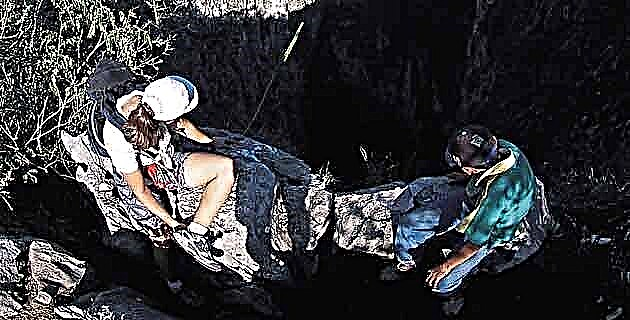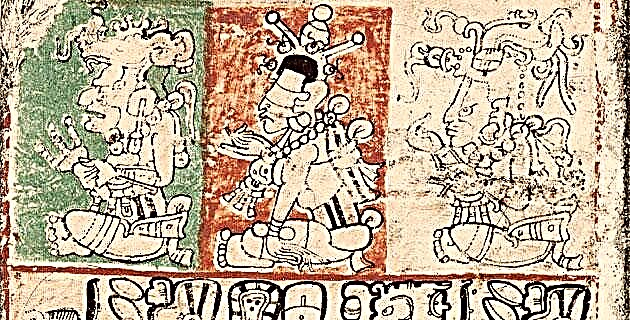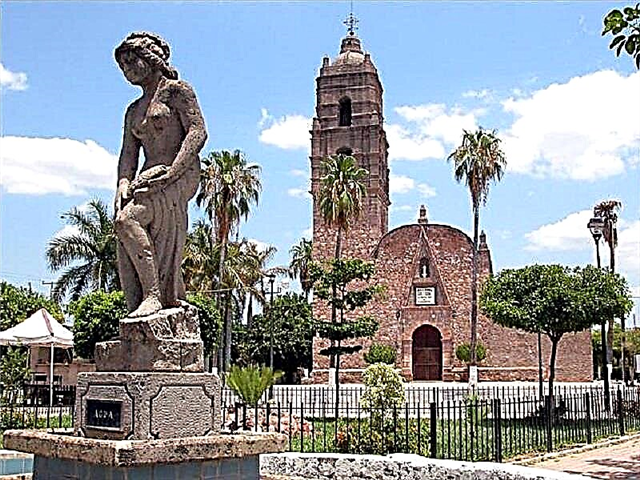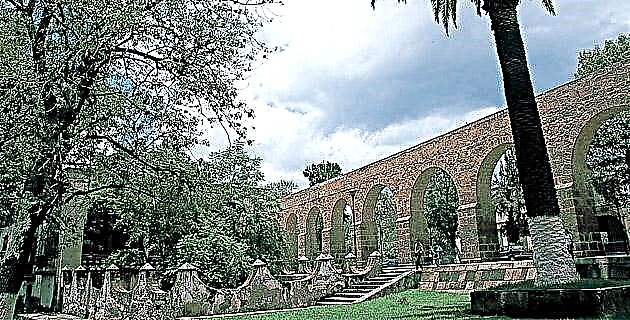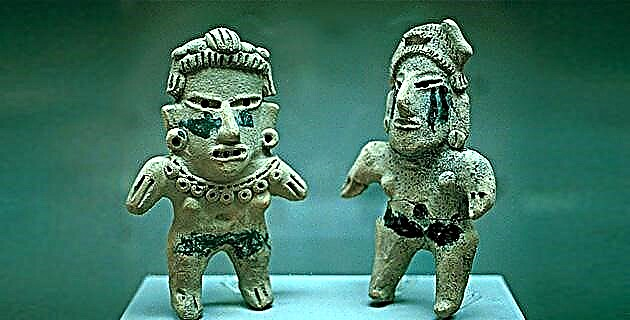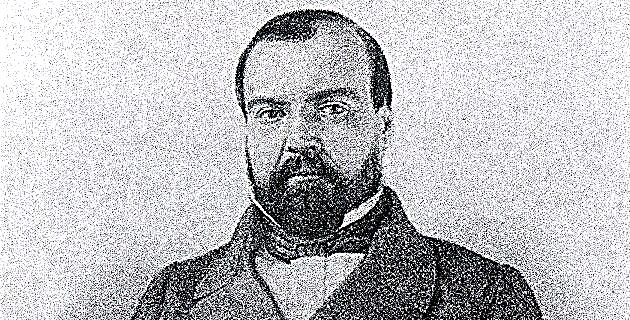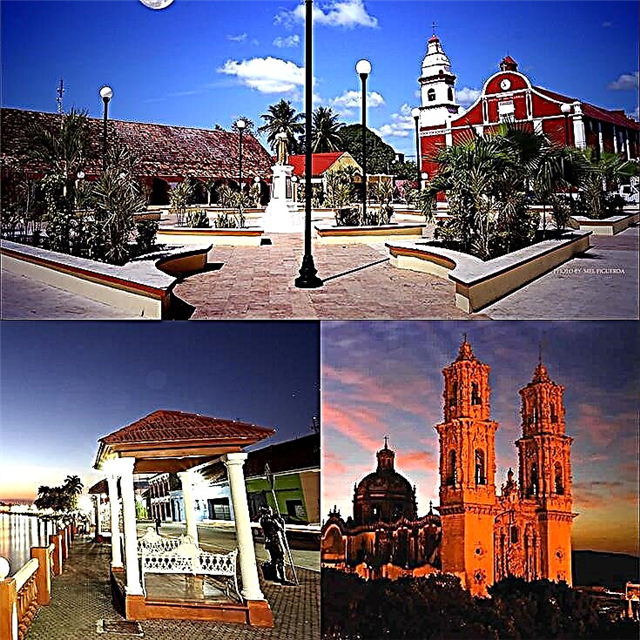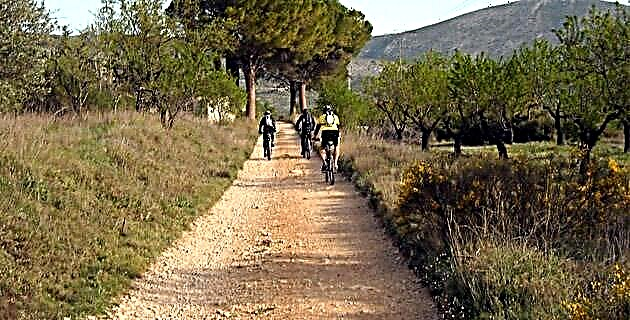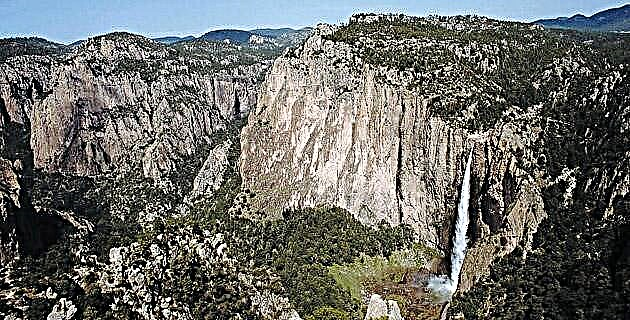
When in March 1994 some of my friends from the Cuauhtémoc Speleology and Exploration Group (GEEC) showed me the great Peña El Gigante in the Barranca de Candameña in Chihuahua, I realized that we were in front of one of the largest walls of stone of our country. On that occasion we took the opportunity to measure the magnitude of the rock, which turned out to have a free fall of 885 meters from the Candameña River to its summit.
When in March 1994 some of my friends from the Cuauhtémoc Speleology and Exploration Group (GEEC) showed me the great Peña El Gigante in the Barranca de Candameña in Chihuahua, I realized that we were in front of one of the largest walls of stone of our country. On that occasion we took the opportunity to measure the magnitude of the rock, which turned out to have a free fall of 885 meters from the Candameña River to its summit.
When I looked for the necessary information to see if there were walls higher than this in the country, to my surprise I found that it was the highest vertical rock face known so far. Whoa, whoa! The closest that had been previously recorded were the walls of Potrero Chico, in the Husteca Canyon in Nuevo León, with just over 700 meters.
As I am not a climber, I decided to promote this wall among climbers, hoping that the first route of ascent of El Gigante would open, in addition to placing the state of Chihuahua in the foreground of the national climb. In the first instance I thought of my friend Eusebio Hernández, then Head of the Climbing Group of the UNAM, but his surprise death, climbing in France, canceled that first approach.
Shortly afterwards I met my friends Dalila Calvario and her husband Carlos González, great promoters of nature sports, with whom the project began to be implemented. For them Carlos and Dalila summoned four excellent climbers, with whom two roped climbers were integrated. One was that of Bonfilio Sarabia and Higinio Pintado, and the other that of Carlos García and Cecilia Buil, the latter of Spanish nationality, considered among the climbing elite of their country.
After getting the necessary support and making a study visit to the wall, the climb began in mid-March 1998. From the outset, difficulties abounded. A heavy snowfall made it impossible for several days to approach the wall. Later, with the thaw, the Candameña River grew so large that it also prevented reaching the base of El Gigante. To access it, you have to do a day's walk from the Huajumar viewpoint, the fastest way, and enter the bottom of the Candameña ravine, to finally cross the river.
The installation of the base camp required dozens of hauls over the course of a week, for which porters from the Candameña community were hired. The rugged terrain did not allow the use of beasts of burden. It was almost half a ton of weight, between equipment and food, which had to be concentrated at the foot of El Gigante.
Once the first problems had been solved, both cordades fixed their attack routes, selecting the appropriate equipment and materials. Higinio and Bonfilio's team opted for a line of fissures found on the left crest of the wall, and Cecilia and Carlos would enter a route in the center, directly below the summit. The goal was to test different routes involving different techniques at the same time. Higinio and Bonfilio looked for a route that would tend towards artificial climbing, not so Cecilia and Carlos, who would try free climbing.
The first ones started with a very slow and complicated ascent due to the rottenness of the stone, which made the belaying very difficult. His advance was inch by inch, with numerous setbacks to explore where to continue. After a long week of attempts they had not exceeded 100 meters, having an equally or more complicated upward panorama, so they decided to abandon the route and climb. This frustration made them feel bad, but the truth is that a wall of this magnitude is rarely achieved on the first try.
For Cecilia and Carlos the situation was not different in terms of difficulty, but they had much more time and were willing to make all the necessary efforts to achieve the climb. On their route, which from below seemed to be free, they did not find a true system of fissures to secure, so they had to resort in many places to artificial climbing; there were also many loose blocks that made the climb dangerous. To continue advancing, they had to overcome the stressful mental exhaustion, which came to border on fear because in more than half of the ascent, a difficult section led them to another even more difficult, where the belays were either very precarious or there were absolutely none because of the rotting of the stone. There were also frequent retreats and extremely slow advances in which they had to carefully feel every meter of stone. There were times when they got discouraged, especially a couple of days when they only advanced 25 meters. But both are climbers of an extraordinary temper, of an uncommon will, which prompted them to overcome everything, carefully examining each meter to climb, sparing no energy. To a large extent, Cecilia's enthusiasm and courage were decisive for them not to give up, and so they spent many days and nights on the wall, sleeping in a special hammock for long climbs like that. Cecilia's attitude was one of total commitment, and alternately tapping with Carlos, opening that first route in El Gigante, was like a surrender to her passion for rock climbing, passion taken to its limits.
One day, when they had been on the wall for more than 30 days, some members of the GEEC rappelled from the summit to where they were, which was already close to the goal, to encourage them and provide them with water and food. On that occasion, Dr. Víctor Rodríguez Guajardo, seeing that they had lost a lot of weight, recommended that they rest for a couple of days to recover a little, and they did so, climbing to the top by the cables placed by the GEEC. However, after the break they continued their climb from where they left off, completing it on April 25, after 39 days of ascent. The magnitude of this escalation had never been achieved by a Mexican.
Although the wall of El Gigante measures 885 meters, the climbed meters were actually 1,025, being the first route in Mexico that exceeds one kilometer. His degree of climbing was high, both free and artificial (6c A4 5.11- / A4 for connoisseurs). The route was baptized with the name of "Simuchí", which means "hummingbird" in the Tarahumar language, because, according to Cecilia told us, "a hummingbird accompanied us from the first day we started climbing, a hummingbird that apparently did not it could be the same, but that every morning it was there, in front of us, only a few seconds. It seemed to tell us that someone was pending and that they cared for our good.
With this first climb to the wall of El Gigante, one of the most notable achievements of rock climbing in Mexico is consolidated and it is glimpsed that the region of the ravines of the Sierra Tarahumara, in Chihuahua, could soon be one of the paradises of climbers. It must be remembered that El Gigante is one of the largest walls, but there are dozens of virgin walls of many hundreds of meters that are waiting for its climbers. And of course, there will certainly be walls higher than El Gigante because we still have to explore most of this region.
Source: Unknown Mexico No. 267 / May 1999

